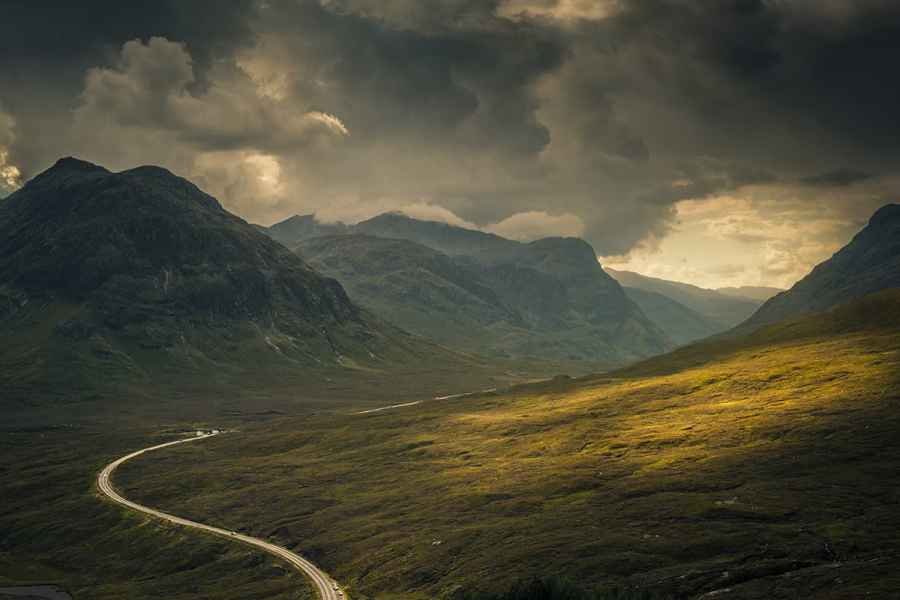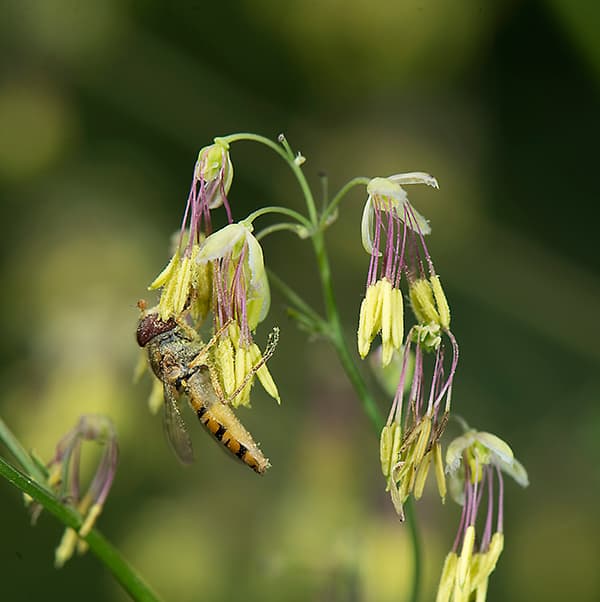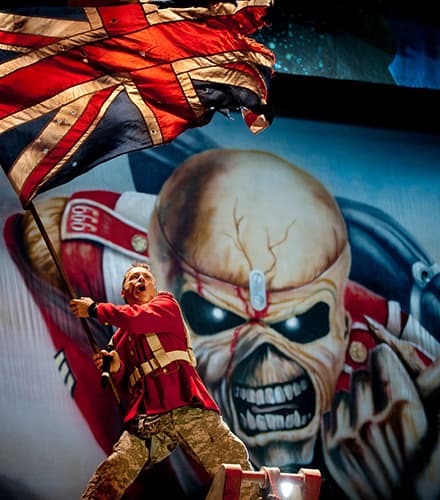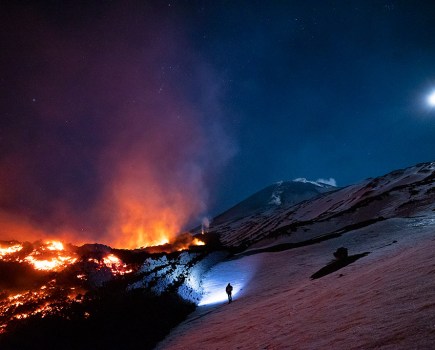Mark Benham | markbenham.co.uk
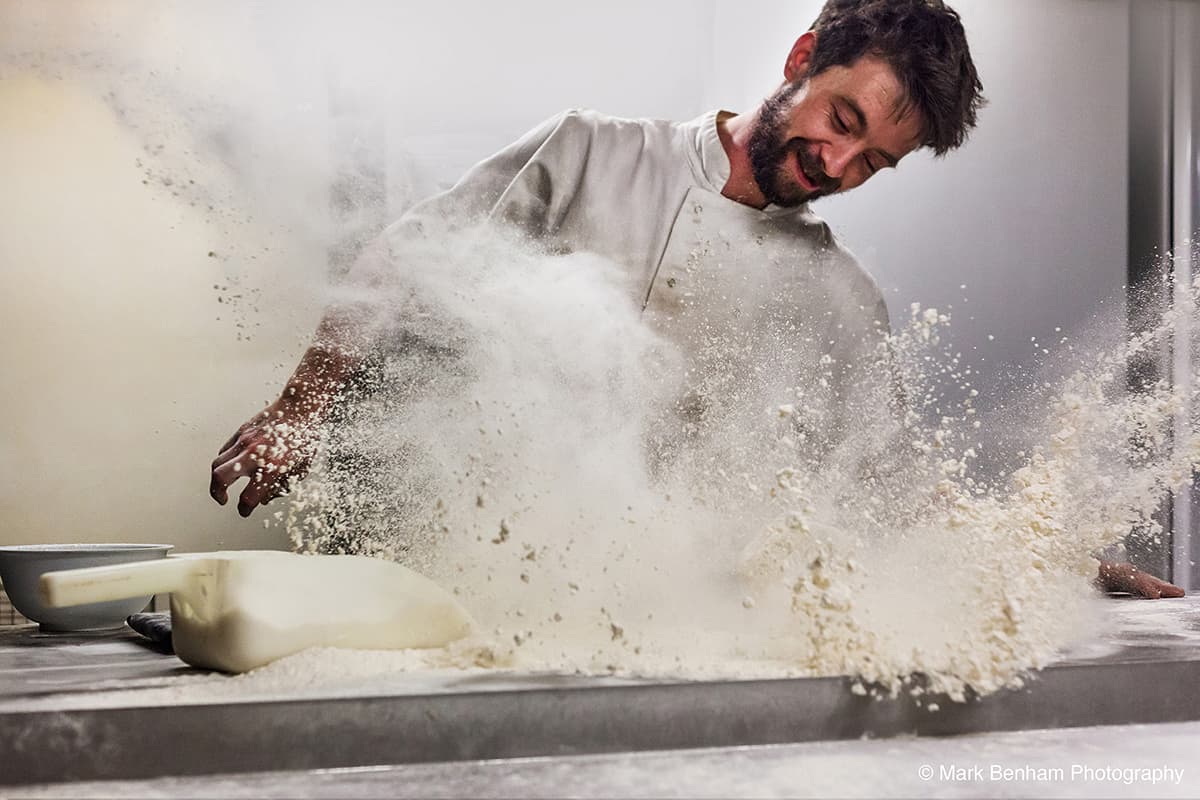
Fast, light and sharp, the Canon 50mm is perfect for grabbing decisive moments. Image by Mark Benham
My main lens is the Canon EF 24-105mm f/3.5-5.6 IS STM. It’s a very practical lens as it’s stabilised and offers both zoom and wideangle options, so you can take it anywhere, which is great. However, I shot the winning image for this year’s Pink Lady Food Photographer of the Year competition (below) with a Canon EF 50mm f/1.8 STM. You can easily get this for under £100 if you shop around and it’s a bargain – an ideal first lens to go alongside your kit lens. It’s very light but also very sharp for the money, with great optics. Remember, 50mm is a classic focal length for portraits. There is so much clarity with prime lenses but relatively little distortion. Using f/1.8 is also wide enough for me at the moment. So it just goes to show that you don’t need to spend a bomb on lenses, but choose wisely.
£335 (24-105mm), £93 (50mm) • www.canon.co.uk
__________________________________________________________
Jeremy Walker | jeremywalker.co.uk
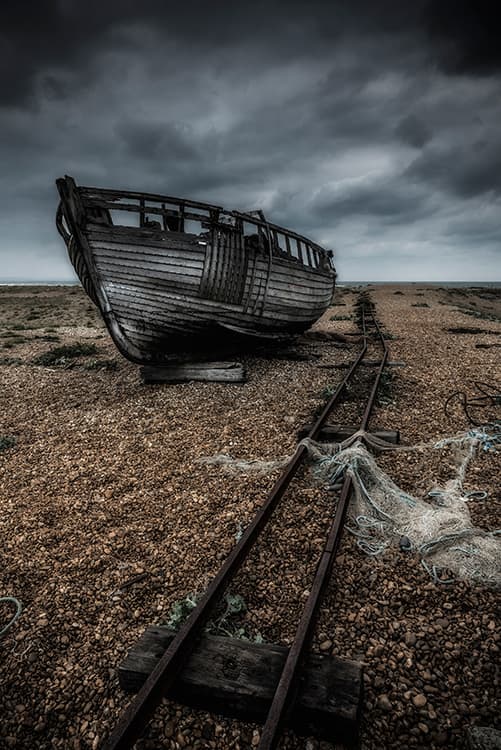
Decaying fishing boat stranded on a beach, taken handheld with Jeremy’s 24-70mm. Image by Jeremy Walker
My first favourite is the Nikon PC-E Micro Nikkor 45mm f/2.8D ED Tilt-Shift lens. As a landscape photographer most readers would probably expect me to be using the 24mm Tilt-Shift, but the 45mm fits the way in which I see the world and the way I work. Not only does the lens have the rise and fall for use in architectural photography (rise and fall negates converging or diverging uprights on buildings), but it’s extremely useful if your landscape has verticals such as trees, or you want to get rid of foreground without actually pointing the camera upwards. The 45mm PC-E also has a tilt mechanism that allows the front elements to be tilted forward, which can allow greater control over the depth of focus. Optically, the lens is stunning (although it’s only manual focus) and it’s a brilliant macro lens – great for details and close-ups.
My second favourite lens is the Nikon AF-S Nikkor 24-70mm f/2.8G ED zoom – my ‘go-to’ lens, along, I suspect, with many other professional photographers. It’s wide enough for landscapes and long enough for portraits without being on top of your subject, so it’s a great all-rounder. Meanwhile, the fast aperture sucks in light while making it straightforward to blur out the background in portraits. I also use the 24-70mm for creating stitched panoramas. But for panorama stitching I never use a focal length wider than 35mm. Going wider may lead to distortion, as would happen on any wideangle.
£1,660 (45mm), £1,200 (24-70mm) • www.europe-nikon.com
__________________________________________________________
Chris Weston | chrisweston.photography
Most people consider wildlife photography to be the realm of super-long telephoto lenses, fast primes and zooms up to 600mm and more. But my all-time favourite lens for wildlife is a Fujinon XF 35mm f/1.4 R – equivalent to a 50mm ‘standard’ lens. Such a short focal length means I have to allow wildlife to come close to me, which takes time, patience and field craft. The beauty of this lens is that it records images very close to how we see it. There’s no wideangle distortion or the contracting of spatial relationships you get from using telephotos.
That said, my workhorse lens is the Fujinon XF 50-140mm f/2.8 R medium (equivalent to a 70-200mm f/2.8 medium telephoto zoom). This is a fast zoom lens that gives me greater flexibility when setting exposures; it’s also relatively small and light, which is useful in tough environments. Both lenses bring out the best from the sensor.
£360 (35mm), £1,150 (50-140mm) • www.fujifilm.eu/uk
__________________________________________________________
Kevin Mullins | kevinmullinsphotography.co.uk
As a documentary wedding and event photographer, my favourite lenses are the Fujinon XF 23mm f/1.4 R and the Fujinon XF 56mm f/1.2 R. When I used an SLR, I always used a 35mm and an 85mm, so this is the closest I can get on Fujifilm’s system. The 23mm gives me a close field of view, while the 56mm lets me get in more of the scene. For wideangle images I also use a Fujifilm X70 compact camera with a 14mm wideangle adapter, so I can get in close and shoot from the hip.
I shoot at wide-open apertures most of the time. I use back-button focusing so I can lock focus and recompose. With new Fujifilm lenses I can shoot at 1/32,000sec, so I don’t worry about shooting wide open on a sunny day. Also, f/1.2 on my 56mm lens is still only equivalent to f/1.8 on a full-frame SLR. I have never used zooms – I want uniformity in my images, which clients can then see on my website so they know what they are getting. With zoom lenses there are too many permutations and distortions.
£669 (23mm), £680 (56mm) • www.fujifilm.eu/uk
__________________________________________________________
Heather Angel | heatherangelphotography.co.uk
My favourite lens has been Nikon’s Micro-Nikkor 105mm ever since it was released. It has been my choice for macro work, both in the field and in my studio, and my current model is the AF-S VR Micro-Nikkor 105mm f/2.8G IF -ED. I used it while working on two pollination projects for Kew (my book Pollination Power published in 2015) that required detailed anatomical shots of flowers and action shots of pollinators.
The 105mm lens allows speedy adjustment from AF to manual focus, which I need for intricate flower shots. It also provides a greater working distance from the front of the lens and the subject than the AF Micro-Nikkor 60mm f/2.8D lens at 1:1 magnification. This gives more space for positioning a reflector to boost natural light. The longer macro lens is also ideal for capturing insect pollinators on flowers.
For bird pollinators on flowers, I use the AF-S Nikkor 70-200mm f/2.8G ED VR II. When used with the TC-20E III teleconverter, it becomes effectively a 70-400mm lens, and the VR means handheld shots are possible. This lens is also useful for larger butterflies that move speedily.
£619 (105mm), £399 (60mm), £1,799 (70-200mm) • www.europe-nikon.com
__________________________________________________________
John McMurtrie | picturedesk.co.uk
I’m a music photographer and official shooter for metal legends Iron Maiden, and my all-time favourite lens is the Nikon AF-S Nikkor 70-200mm f/2.8G ED VR II. I won’t attempt to shoot a live show without it. At a gig you can’t always get close to a subject because of the height of the stage, and having the extra focal length usually allows me to get close crops on a singer’s face and full frame on a guitarist.
For a head-shot front cover I shoot a lot of frames. There are several reasons why I use a longer focal length. First, I am further away from my subject; I don’t want to be so close that I am breathing in their face. Second, the longer focal length compresses perspective and makes them look slimmer. Last, together with a wide aperture it throws the background out of focus and really makes a portrait zip!
£1,799 (70-200mm) • www.europe-nikon.com
__________________________________________________________
Damian Shields | damianshields.photoshelter.com
The Nikon AF-S Nikkor 70-200mm f/2.8G ED VR II is my travelling lens, and is attached to my Nikon D800 before I go anywhere. I also like to keep the lens on the camera while moving around on foot for the same reason. There are many opportunities for images while making my way from A to B. The added bonus of VR helps in these handheld situations and the lens focuses really quick to target.
What’s more, image sharpness from 70-200mm is crisp right across the image with only slight falloff when shooting at the longer end. As well as one always on the camera, I also have an extra tripod plate attached to the lens to avoid continually switching the one plate between set-ups. My second favourite is the Sigma 24-70mm f/2.8 IF EX DG HSM. It’s just as well suited to handheld shooting as the Nikon but lacks VR. It has great sharpness across the frame, and I love being able to switch between manual and autofocus by sliding the barrel.
£1,770 (70-200mm), £526 (24-70mm) • www.canon.co.uk, www.sigma-global.com/en
__________________________________________________________
Adrian Dennis | adriandennis.com
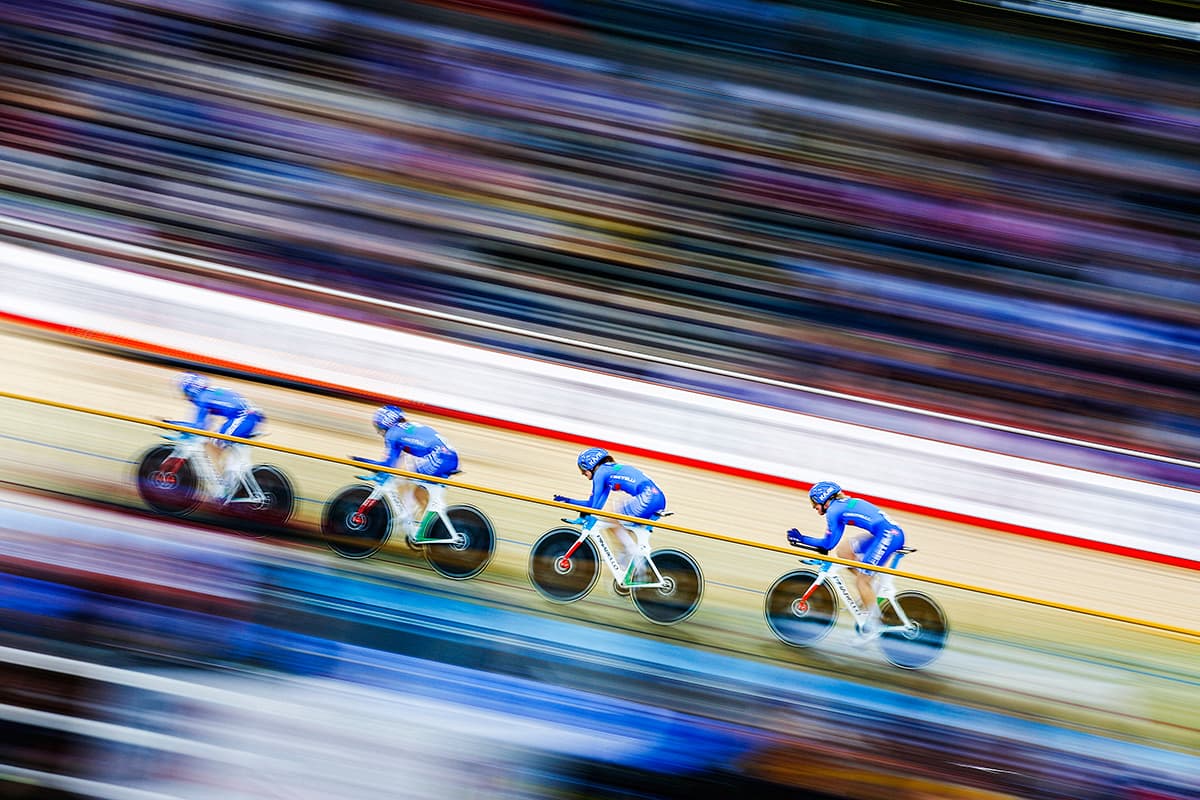
The 70-200mm is very versatile, giving vital extra reach without weighing you down. Image by Adrian Dennis
As I work for a news agency, I’d have to say the Canon EF 70-200mm f/2.8L IS II USM is one of my favourite lenses – you’ll find it in most press photographers’ bags. The lens is very versatile as a lot of press work is done within this focal length range. It’s sharp and the autofocus is good; it also has the advantage of an image stabiliser for when you’re shooting in very low light or using particularly long exposures. Moreover, when you have to be mobile carrying two cameras – one with a wideangle and the other with the 70-200mm – you’re covered for most eventualities. If you’re really stuck for needing a long lens, the telephoto zoom works well with a teleconverter for when you need just that little bit more.
Another lens that is dear to my heart is the Canon EF 400mm f/2.8L IS II USM super-telephoto lens. Most football and rugby in the UK is shot with this lens, usually in conjunction with the 70-200mm. I spend a good deal of my time on the sidelines, and I’m looking to capture the action using fast shutter speeds with the lens ‘wide open’. The idea is to keep the viewer’s attention on the sharp players while the background ‘blows out’ into clean even tones.
£1,772 (70-200mm), £8,350 (400mm) • www.canon.co.uk
__________________________________________________________
Sue O’Connell | sueoconnell.photography
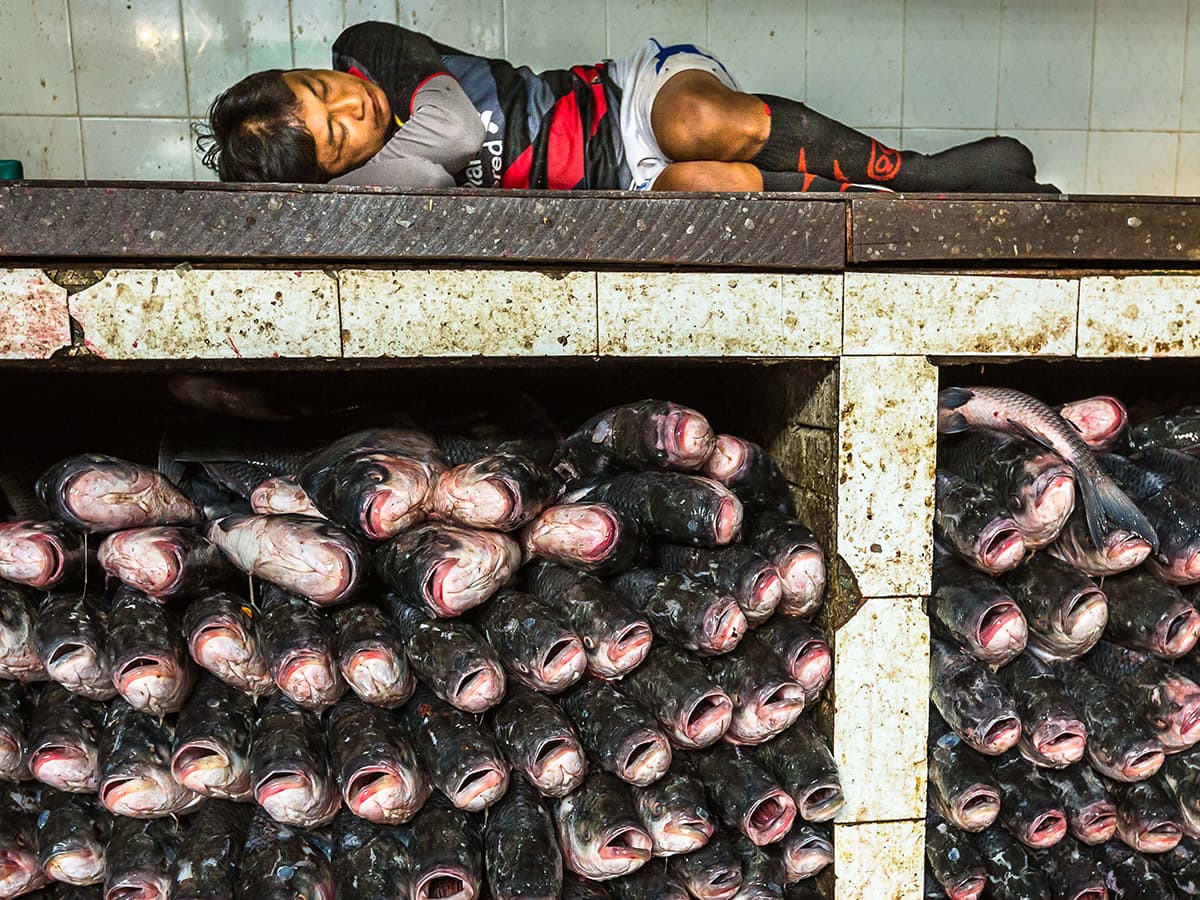
The 16-35mm is great for tight interior shots, as we can see in this fish-market scene. Image by Sue O’Connell
As a travel photographer (not a weightlifter!), my choice of lenses will always be a compromise between speed and portability. Fortunately, increased ISOs and improved stabilisation make this less of an issue these days. My go-to lens is the Canon EF 24-105mm f/4L IS USM. It has the perfect combination of range and quality, and I used it to shoot award-winning images in the Travel Photographer of the Year and National Geographic Traveller competitions. This lens is more or less permanently attached to my Canon EOS 6D (full-frame) body, taking complete advantage of its wideangle capability.
My other regular lens is the Canon EF 16-35mm f/2.8L II USM, which is a great ultra-wide zoom. It’s expensive but fast, silent, accurate, a joy to handle and responsible for many award-winning images. This has served me particularly well in Myanmar [Burma], both in tight interior contexts and to add drama to close-ups.
£727 (24-10mm), £1,060 (16-35mm) • www.canon.co.uk

